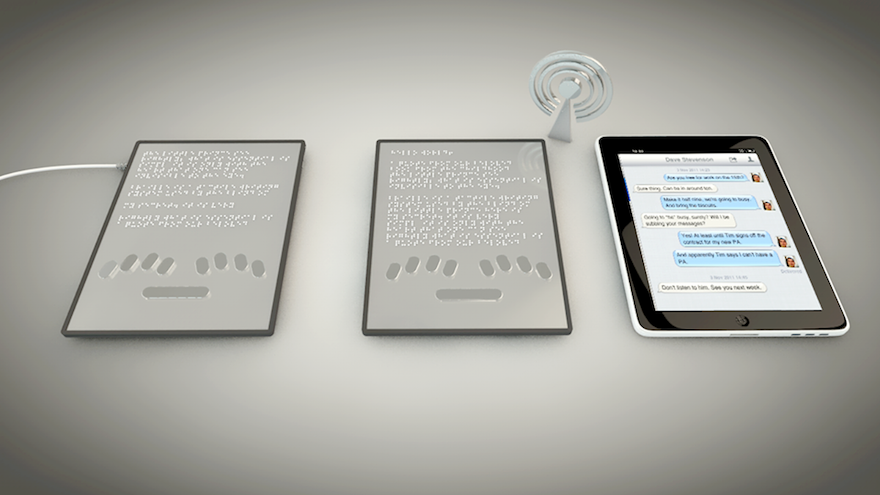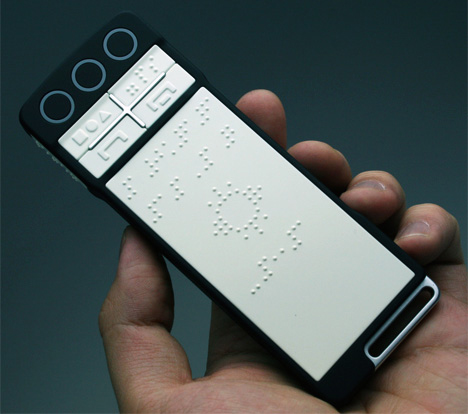Empowering Freedom With Assistive Modern Technology for the Blind
The assimilation of assistive technology right into the lives of individuals with aesthetic problems represents a considerable innovation in advertising self-reliance and self-sufficiency. From innovative display visitors to sophisticated clever canes, these tools not only boost everyday navigation and communication yet additionally empower individuals to involve meaningfully in different facets of life. As we explore the myriad advantages and real-world applications of these innovations, it ends up being critical to analyze the hidden elements that add to their performance and the potential for future developments in this crucial field.
Review of Assistive Technology

The development of assistive innovation is grounded in concepts of inclusivity and empowerment. Developments in software, hardware, and sensory enhancements provide customers with alternatives tailored to their particular requirements. From display visitors that transform text to speech, to responsive gadgets that share info through touch, these tools transform the method people engage with their environments.
In addition to functional applications, assistive innovation cultivates greater social addition and involvement in numerous industries, consisting of education and learning and work (AI-powered visual aids). As research and advancement remain to progress, the possibility for assistive modern technology to further enhance the lives of aesthetically damaged people remains promising, leading the way for a much more fair society where every person can grow
Kinds of Assistive Devices
A range of assistive tools have emerged to support individuals with aesthetic disabilities, each designed to fulfill certain demands and improve day-to-day functioning. These devices range from low-tech services to state-of-the-art developments, supplying varied alternatives for customers.
Low-tech devices include magnifiers and large-print materials that assist in reading and writing. Braille tools, such as Braille styluses and slates, allow responsive analysis and communication. Positioning and wheelchair aids, like white walking canes, aid customers browse their setting securely.
On the greater end of the range, digital zoom systems and screen visitors supply substantial assistance. Digital magnifiers permit customers to increase the size of message and pictures on screens, while screen viewers convert electronic material right into manufactured speech, promoting accessibility to information on smartphones and computer systems.
Smartphone applications also play a crucial function, offering attributes like text recognition and navigation support. Wearable technology, such as clever glasses furnished with increased fact, is emerging as a promising tool to enhance situational awareness.
Benefits of Assistive Modern Technology
The assimilation of assistive technology significantly boosts the lifestyle for individuals with aesthetic disabilities. These technologies encourage individuals by advertising self-reliance, allowing them to navigate their atmospheres better and carry out daily jobs with greater ease. Screen visitors and zoom software program enable people to accessibility electronic info, cultivating instructional and specialist opportunities that may have formerly been out of reach.
Moreover, assistive gadgets such as clever walking canes and general practitioners applications offer real-time navigating support, enhancing movement and security. This enhanced freedom not only boosts self-confidence but likewise motivates social involvement, permitting customers to participate even more totally in their areas.
Assistive technology also facilitates communication, helping customers get in touch with others via voice recognition and text-to-speech applications. This ability is important for keeping partnerships and accessing critical details.
Additionally, the personalization choices available with many assistive modern technologies ensure that customers can customize tools to their certain needs, even more boosting use and efficiency. Overall, the benefits of assistive technology for people with visual impairments are extensive, promoting an extra comprehensive society where every person can seek their desires and goals.
Study and Success Stories
Highlighting the transformative effect of assistive modern technology, various situation research studies illustrate how individuals with aesthetic impairments have actually successfully incorporated these tools into their day-to-days live. One compelling example involves an university student that utilized display reading software program to browse on the internet resources and academic materials efficiently. This modern technology not just facilitated her education and learning but likewise improved her confidence in joining discussions and team tasks.
Another case research features an expert who utilizes a mobile phone application created for navigation and object acknowledgment. By utilizing this app, he has restored freedom in both his individual and workplace, allowing him to commute independently and engage with colleagues better.
Additionally, a retiree shared her experience with braille e-readers, which enabled her to access a large selection of literary works and stay gotten in touch with her neighborhood with publication clubs.
These success stories underscore the important role of assistive innovation in promoting self-reliance, improving lifestyle, and advertising social combination for individuals with aesthetic problems (Speech-to-text devices for low vision). By welcoming these cutting-edge tools, users can get rid of difficulties and seize opportunities that contribute to their expert and individual satisfaction

Future Patterns in Assistive Innovation
Development in assistive technology is poised to redefine visually impaired the landscape of assistance for individuals with aesthetic disabilities. Arising trends stress the combination of expert system (AI) and machine knowing, which boost the capability of devices that help with navigating and info ease of access. As an example, AI-driven applications are currently efficient in interpreting visual information affordable glasses in real-time, making it possible for customers to engage with their environment more independently.
Moreover, the development of wearable innovation is progressing swiftly. Smart glasses furnished with increased reality (AR) can offer audio descriptions of environments, changing just how individuals communicate with public spaces. These devices not just promote freedom however likewise foster social incorporation.
In Addition, the Net of Points (IoT) is making homes smarter, permitting seamless connection between day-to-day home appliances and assistive tools. This connection equips users by allowing voice-activated controls and automated feedbacks customized to individual demands.
Conclusion
To conclude, assistive modern technology plays a critical role in encouraging individuals with visual disabilities by boosting their freedom and involvement with their environments. The varied variety of applications and devices available not only facilitates navigation and interaction however also advertises social assimilation and possibilities for personal and expert development. As innovations proceed in this area, the possibility for boosting the quality of life for those with visual disabilities will certainly broaden, promoting greater autonomy and empowerment.
